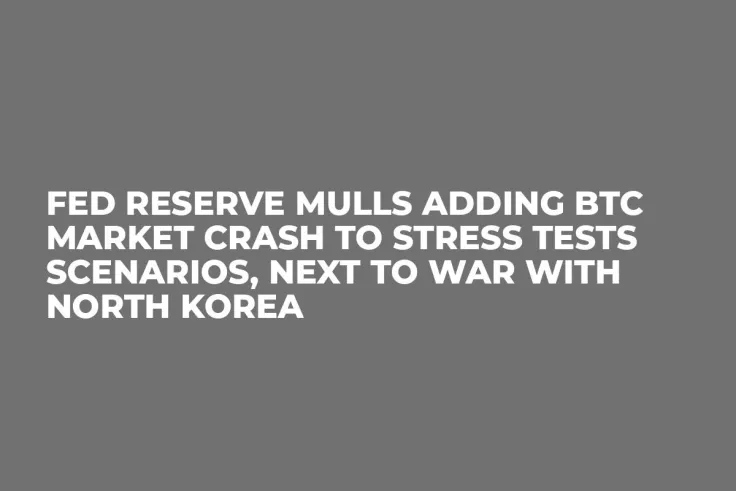
On Thursday, Feb 28, the board of the Fed published several amendments regarding the scenario for conducting stress tests. One of the added factors was the Bitcoin market crash, which in the future may be considered one of major risks for traditional financial markets too.
“Extraordinary shock”
The published document says that the suggestion to include the crypto factor was made by a board member who said that now the Bitcoin market is strong enough to be put on the list of so-called “extraordinary shocks”. War with North Korea is also on that list, along with other factors.
The board of the Fed Reserve intends to conduct market stress tests in quite a dynamic way by adding significant market risks into the possible scenarios. Other things that have recently been added are crude oil price shocks and a heavy economic setback in the EU.
Why Fed makes stress tests
The Fed board conducts these supervisory tests of eligible companies following the Dodd-Frank Reform Act, as well as the stress test rules of the board.
As per a Fed board member, one of the reasons for these tests is to provide management teams of companies and their managing board with data of possible future scenarios of stressful conditions regarding the way how banks can absorb their losses and fulfil the obligations to partners and creditors.
Currently, there are three scenarios for stress tests: baseline, adverse and severely adverse.
Each test is to see how a company’s balance sheet, RWA, net income, etc., may change when conducting each of these stress tests on them.
All amendments that will be adopted are going to come in power in a month’s time – April 1.

 Dan Burgin
Dan Burgin Vladislav Sopov
Vladislav Sopov U.Today Editorial Team
U.Today Editorial Team